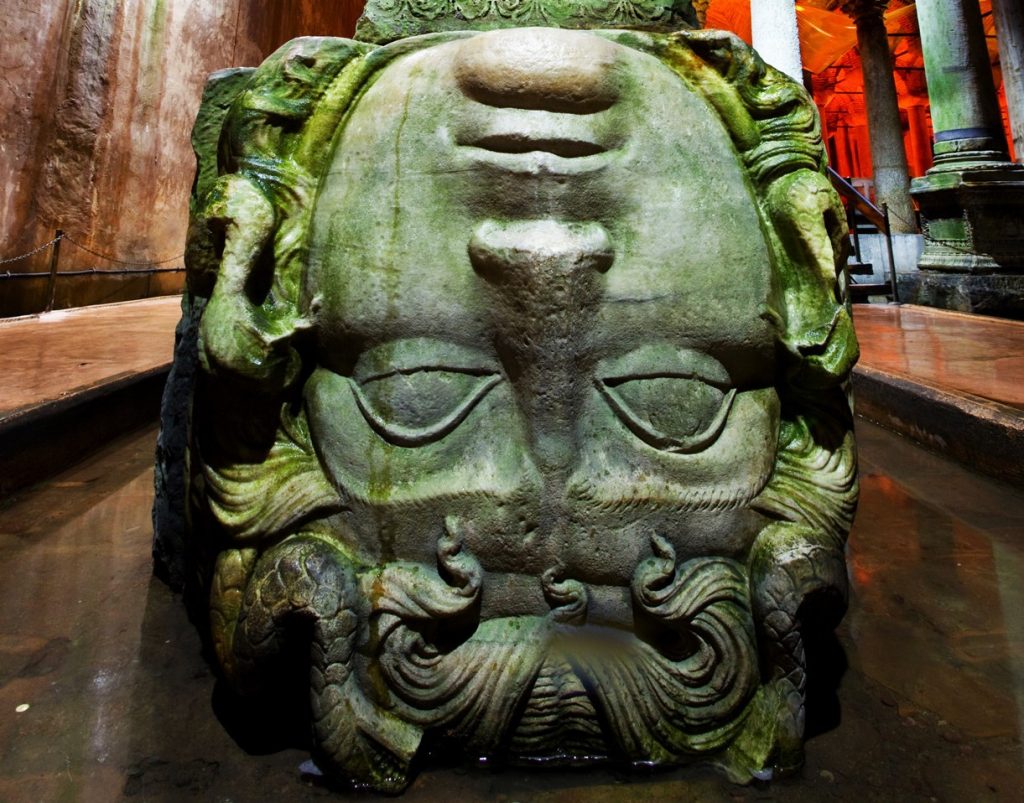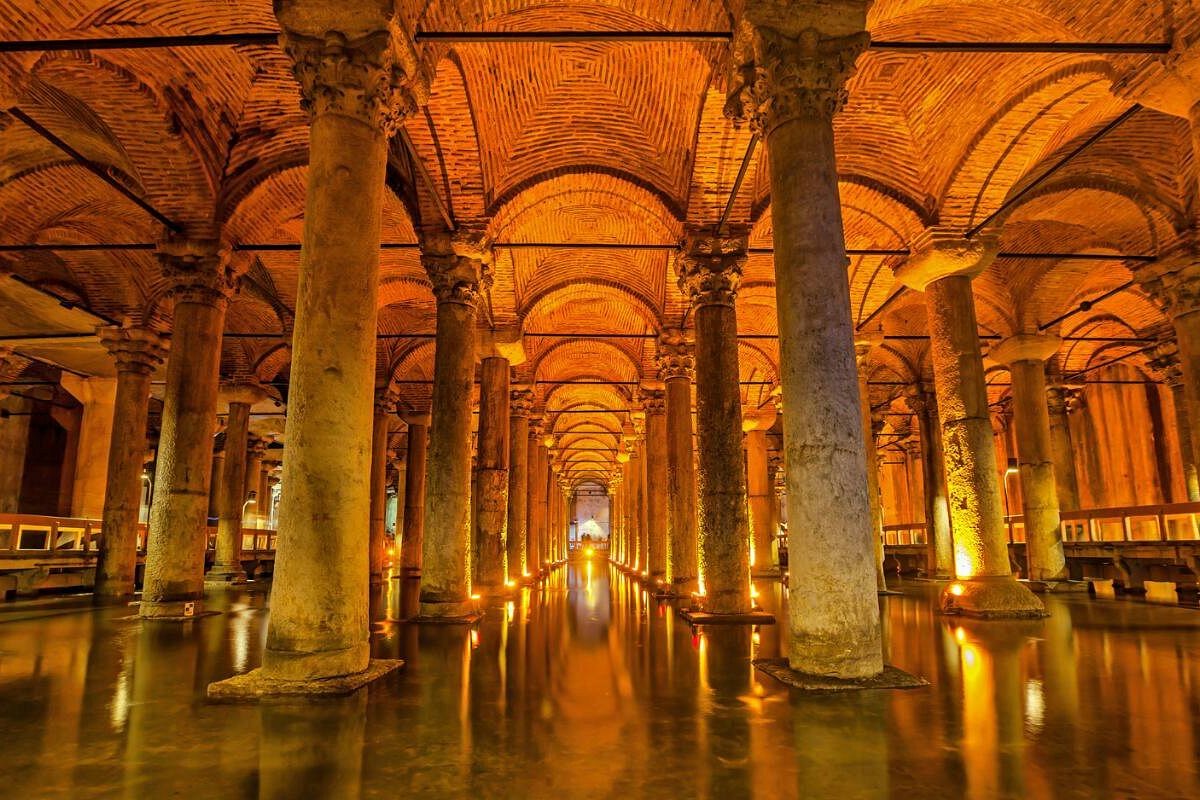The Basilica Cistern, also known as the Yerebatan Sarnıcı or Sunken Palace, is an ancient underground water reservoir located in the heart of Istanbul, Turkey. This marvel of Byzantine engineering has captivated visitors for centuries with its eerie beauty, historical significance, and ingenious design.
Constructed during the reign of Emperor Justinian I in the 6th century CE, the Basilica Cistern was built to ensure a stable water supply for the city of Constantinople, the capital of the Byzantine Empire. Its name, Basilica, refers to the nearby Stoa Basilica, a public square that once stood above the cistern. The cistern’s immense capacity, capable of holding up to 80,000 cubic meters of water, made it a vital resource for the city’s inhabitants during times of drought or siege.
The Basilica Cistern’s most distinctive feature is its forest of marble columns, which support the vaulted ceiling and create a mesmerizing visual effect. Over 300 columns, most of which were salvaged from earlier Roman buildings and repurposed for the cistern, stand in neat rows, forming a labyrinthine network of pathways for visitors to explore. The columns vary in style and material, reflecting the eclectic nature of Byzantine architecture and the cultural influences that shaped Constantinople as a crossroads of East and West.
One of the most famous columns in the Basilica Cistern is the Medusa column, so named because it is topped with a carved head of the mythical Gorgon Medusa. The origin of this intriguing artifact remains a mystery, with theories ranging from its reuse as a decorative element to its symbolic significance in warding off evil spirits. Regardless of its original purpose, the Medusa column has become an iconic symbol of the Basilica Cistern and a popular attraction for visitors seeking to unravel its enigmatic history.

The atmosphere inside the Basilica Cistern is both mystical and haunting, with dim lighting, echoing footsteps, and the occasional drip of water creating an otherworldly ambiance. Visitors descend into the cistern via a staircase and wooden walkways, immersing themselves in its subterranean realm as they navigate between the columns and peer into the dark waters below. The cool, damp air and the sense of isolation evoke a sense of wonder and introspection, inviting contemplation of the cistern’s ancient origins and the passage of time.
Throughout its long history, the Basilica Cistern has undergone periods of neglect, renovation, and rediscovery. After the fall of Constantinople to the Ottoman Turks in 1453, the cistern fell into disuse and was largely forgotten until it was rediscovered by European travelers in the 16th century. Subsequent renovations were carried out to repair and restore the cistern, ensuring its preservation as a cultural heritage site for future generations to admire and appreciate.
Today, the Basilica Cistern continues to enchant visitors from around the world with its timeless beauty and historical significance. It serves not only as a testament to the ingenuity of Byzantine engineers but also as a reminder of Istanbul’s rich and diverse heritage as a bridge between continents and civilizations. As visitors stroll among the columns and gaze into the still waters of the cistern, they are transported back in time to an era of emperors and empires, where the past converges with the present in a timeless embrace.



